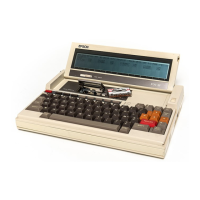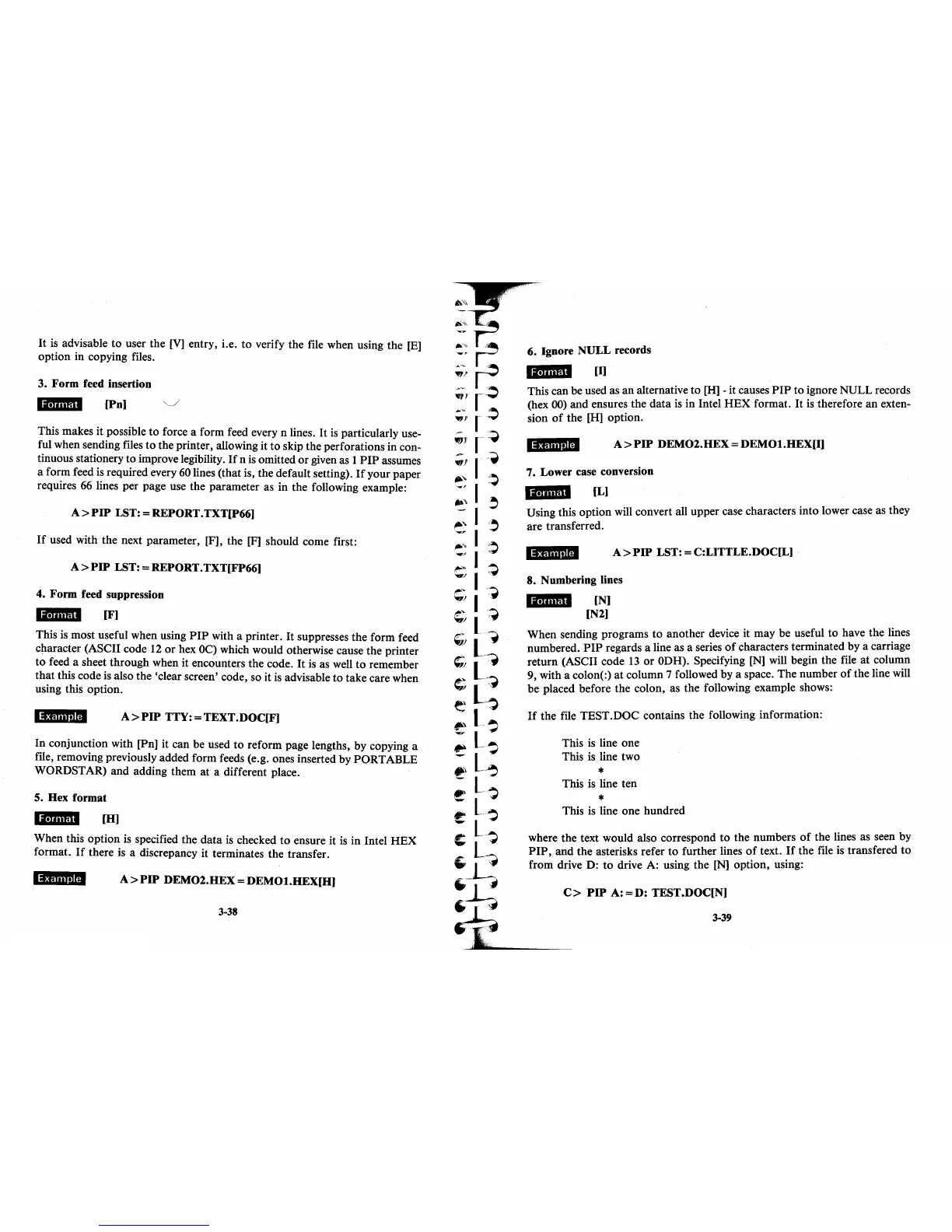It
is
advisable to user the
[V]
entry, i.e.
to
verify the file when using the
[E]
option in copying files.
3. Form feed insertion
1i.I'@1I
[Pn]
This makes it possible to force a form feed every n lines.
It
is
particularly use-
ful when sending files to the printer, allowing it to skip the perforations in con-
tinuous stationery
to
improve legibility.
If
n
is
omitted or given as 1
PIP
assumes
a form feed
is
required every 60 lines (that is, the default setting).
If
your paper
requires
66
lines per page use the parameter as in the following example:
A>
PIP
LST: = REPORT. TXT[P66]
If
used with the next parameter, [F], the
[F]
should come first:
A>
PIP
LST: = REPORT. TXT[FP66]
4. Form feed suppression
1i.I'@"
[F]
This
is
most useful when using
PIP
with a printer.
It
suppresses the form feed
character (ASCII code
12
or
hex
OC)
which would otherwise cause the printer
to
feed a sheet through when it encounters the code.
It
is
as well to remember
that
this code
is
also the 'clear screen' code, so it
is
advisable
to
take care when
using this option.
14Mintm
A>
PIP
TTY: = TEXT .DOC[F]
In conjunction with [Pn] it can be used
to
reform page lengths, by copying a
file, removing previously added form feeds (e.g. ones inserted by PORTABLE
WORDST AR) and adding them
at
a different place.
5. Hex format
Ii.II@1I
[H]
When this option
is
specified the
data
is
checked
to
ensure it
is
in Intel
HEX
format.
If
there
is
a discrepancy it terminates the transfer.
A>
PIP
DEM02.HEX
=
DEMOl.HEX[H]
3-38
6. Ignore NULL records
...1111611
[I]
This can be used as an alternative
to
[H]
- it causes
PIP
to ignore NULL records
(hex 00) and ensures the
data
is in Intel
HEX
format.
It
is
therefore an exten-
sion
of
the
[H]
option.
14Mllllm
A>
PIP
DEM02.HEX
=
DEMOl.HEX[I]
7. Lower case conversion
".!I@II
[L]
Using this option will convert all upper case characters into lower case as they
are transferred.
14$1"'m
A>
PIP
LST: = C:LITTLE.DOC[L]
8. Numbering lines
".!I@II
[N]
[N2]
When sending programs to another device it may be useful to have the lines
numbered.
PIP
regards a line as a series
of
characters terminated by a carriage
return (ASCII code
13
or ODH). Specifying
[N]
will begin the file at column
9, with a colon(:)
at
column 7 followed by a space. The number
of
the line will
be placed before the colon, as the following example shows:
If
the file TEST .DOC contains the following information:
This
is
line one
This is line two
*
This
is
line ten
*
This
is
line one hundred
where the text would also correspond
to
the numbers
of
the lines as seen by
PIP,
and the asterisks refer
to
further lines
of
text.
If
the file
is
transfered to
from drive D:
to
drive A: using the
[N]
option, using:
C>
PIP
A: =
D:
TEST .DOC[N]
3-39

